It was always hard to know what Mother wanted—though in certain respects she made her wishes clear, mostly having to do with cleaning up some mess or getting the hell out of her way. When I was a child following her around the kitchen, she’d say, sharply: ‘Get out from under my feet!’ She said it so often that I now find myself saying it to the cat, who actually is getting under of my feet.
But as far as expressing a desire for something that might please her (other than neatness or personal space), she was maddeningly noncommittal. Shopping for birthday or Mother’s Day gifts was impossible—she wouldn’t admit to wanting or needing anything. Which made the tourmaline necklace a rarity: She saw it in the window of the best jeweler in town and almost bought it—but didn’t, because it was too expensive.
My father, who was as much in the dark as any of us about what Mother wanted, immediately went out and bought it for her. And of course she was annoyed. Why had he spent the money? She hadn’t wanted it that much.
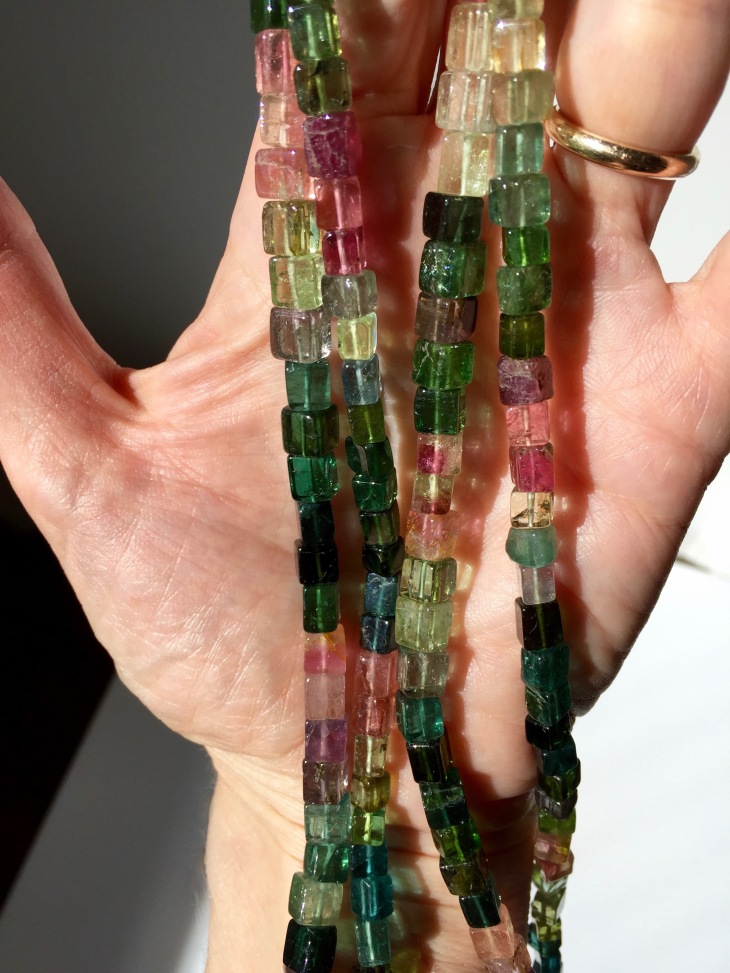
Well, that was Mother. She had a good eye but refused to be satisfied. The necklace was a double strand with a lot of visual impact—all those rich colors playing off each other. But she had it restrung as a long single strand, which I thought was not nearly as pretty. Not that I said so.
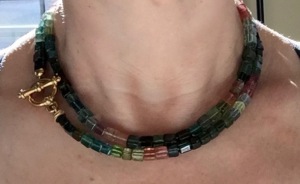
When she gave me the necklace, many years later—she gave away her good jewelry a few years before she died—I had it restrung with a toggle clasp so I could wear it properly doubled. But I too am not quite satisfied with it. I’d almost rather look at the beads than wear them. Tourmalines need strong light to bring out their glory.
Tourmalines come in many colors, quite a few of which are in Mother’s necklace: rich greens of all descriptions, peacock blues, luscious pinks, golds, yellows. The word ‘tourmaline’ comes from the Sinhalese word ‘turamali’, which means ‘stone of various colors’. Actually, tourmaline is not a single mineral but a group of minerals—boron silicates—with similar properties. To wit: tourmaline is hard—7 to 7.5 on the Mohs hardness scale. It’s pleochroic, meaning it can appear to change colors when viewed from different angles. And it’s electric: it can produce and hold an electrical charge when put under pressure, stress or extreme temperature change.
Tourmaline is found all over the world, but most varieties are black or brown, and not gem quality. The quartz stone below left, for example, is peppered with rods of black tourmaline—one of the few ways you’ll see it used in jewelry.
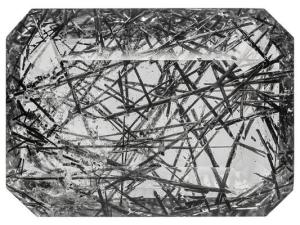
Most gem-quality tourmaline is in the elbaite family. That’s not a name you’ll hear. But you will hear names signifying specific colors: indicolite for blue tourmaline; rubellite for raspberry red; verdelite or chrome tourmaline for green; paraiba for that peacock blue-green; and watermelon for red and green together. These different colors are caused by mineral impurities (iron, titanium, lithium, chromium, manganese).
If I had to guess, I’d say Mother’s beads were mined in Brazil, the source of some of the world’s best tourmaline. Other lovely stuff comes from Mozambique, Nigeria and Sri Lanka. America used to be major a source. China’s last Empress, the jewelry-loving Cixi, whom I wrote about here, adored the pink tourmaline mined in Southern California and bought huge quantities of it, causing a boom that ended after her death in 1908.
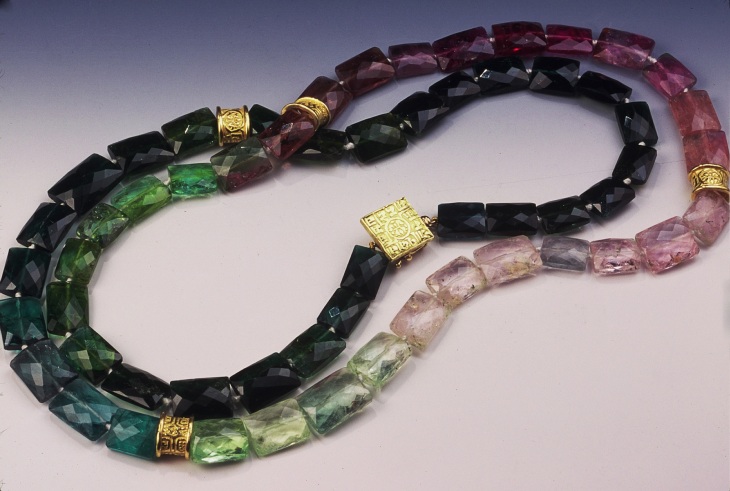
Good tourmaline has become expensive and hard to obtain. The necklace above, for example, was designed by my friend Nan Irwin in the days when she had access to hunky Brazilian stones like these. But her sources have dried up. She’s heard that large amounts of rough tourmaline have been bought up by the Chinese, who have major gem-cutting operations and a huge market for colored stones. This is hard to verify. The Chinese get blamed for buying up all kinds of stones, and, well, they do buy a lot. The spirit of Cixi, it seems, is still with us.
As Nan and I commiserated about all this over a glass of wine, she flung the necklace below onto the bar. ‘I used to get stones like these all the time,’ she said. ‘This may be the last of them.’ (We met at our usual watering hole, where nobody bats an eye at the sight of gems on the bar.)

These beads are beautiful, in their exotic, electric way. They have a primal glow, as though they leaped out of the earth and into the necklace with very little human intervention (which means there was a lot of the right kind of intervention). No other gem is quite like it.

The luscious rubellite tourmaline in the ring above has that same strange clarity: glassy, almost metallic. It seems to crave light; and it takes that light into itself and magnifies it, like a magic mirror from the depths of the earth.
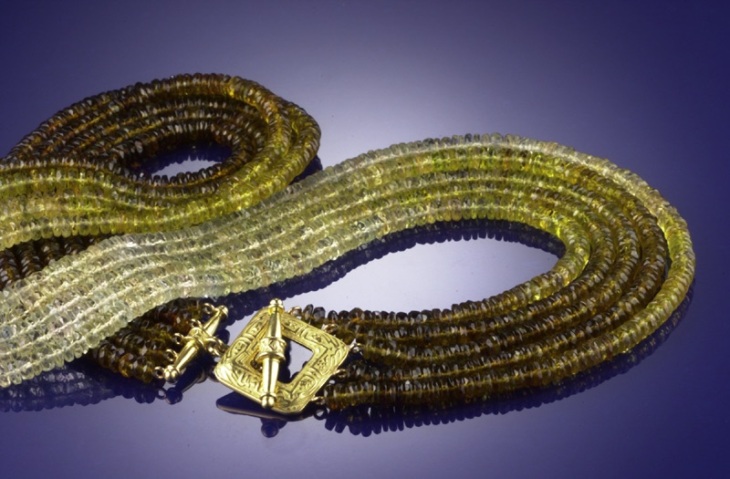
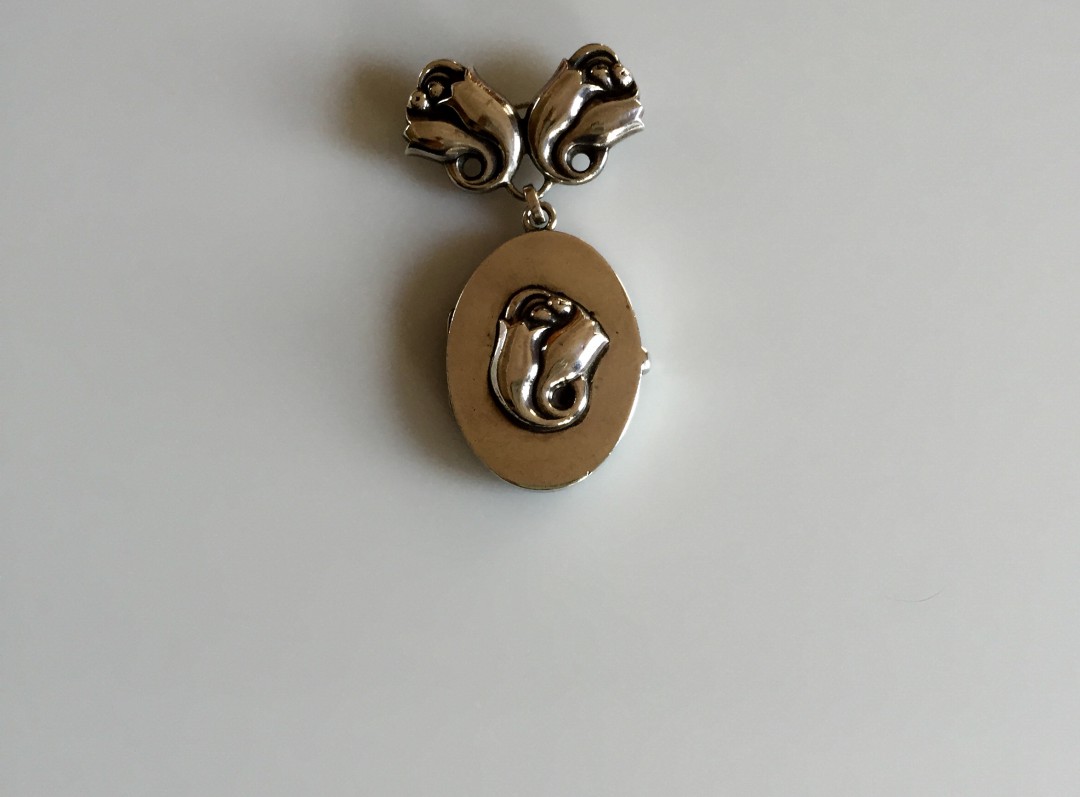
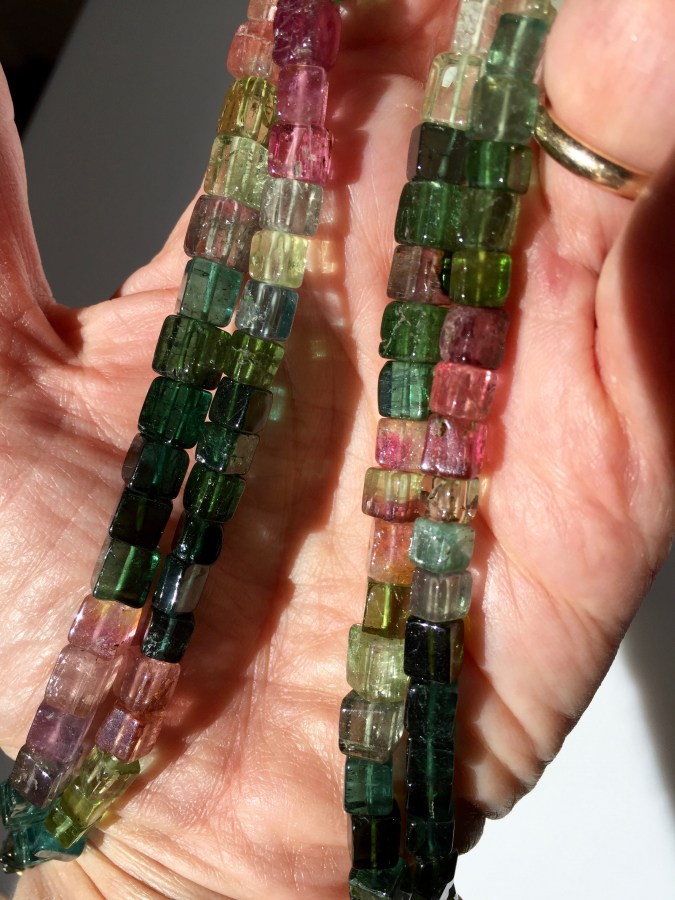
Love the tourmaline and gold necklace, and your mother’s necklace, and the rubellite tourmaline ring. Most of all I love the words in this blog. I had heard of tourmaline but had no idea what it was. I probably read it in a novel where some woman was wearing it. Now I fully KNOW what it is. I even know, for the first time of conscious awareness (maybe you’ve mentioned it before) of the Mohs hardness scale. Oh boy. And “pleochroic”. What a term! I am enriched.
LikeLike
Love these colors!
Sent from my iPad
>
LikeLike
Hi Marcia, How are you? I always enjoy your postings. Tourmalines are by far my favorite gems. I have been collecting Paraiba Tourmalines from the time that the original mine San Jose De Battalha was discovered. Thanks to my friend Naum, who knew one of the owners of the mine, I became aware of these amazing stones. Some of my stones are at the Smithsonian in DC, others at the Museum of Natural History, right here in New York. I even worked with Tiffany who liked to pave the little stones with lots of little diamonds all around. I have sold most of my collection and have a few lots left, some in my 10-muses store on eBay. This weekend I have a spectacular necklace on sale at a huge discount, that I thought would be right up to your alley. A necklace featuring all kinds of carved Chinese stones with a great Carnelian pendant. Please view it, if you have the time. http://www.ebay.com/itm/ANTIQUE-VINTAGE-CHINESE-CARVED-SHOU-KNOT-JET-JADE-BEADS-PENDANT-NECKLACE-19-/132184791618?hash=item1ec6d3da42 Looking forward to more from you and would love to meet you again in the city sometimes. Warm regards, atara
LikeLike